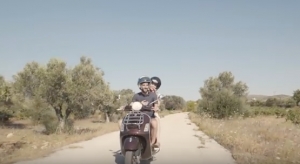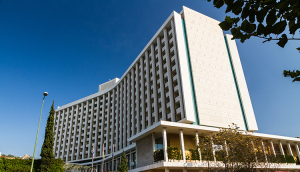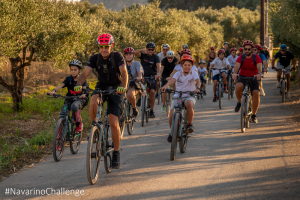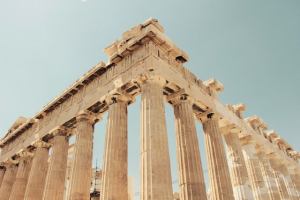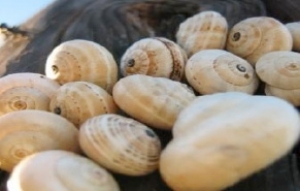XpatAthens
'The True Athens Escape' Video Released By Greek Municipality
Athens-Thessaloniki Electrified Railway Line Opens for Travel
The First Greek ‘IRONMAN 70.3’ Ends With Great Success
Modernist Architectural Gems To Look Out For In Athens
However, if you take a closer look you will find, tucked between the ancient sites, the neoclassical buildings, and the monotonous apartment buildings a bunch of modernist architectural gems.
Among them, the National Hellenic Research Foundation and the Athens Tower, have been overlooked in part due to being erected during the military dictatorship of 1967-1974 and dismissed as “junta” projects. But the Greek architects of these and other landmark post-war structures were largely inspired by the Bauhaus school and sought to amalgamate Greek urban life with the international spirit of the times. Here are 3 of the most notable modernist buildings in Athens.
Embassy Of The United States
The US Embassy in Athens is a monumental example of mid-century modernism. The Embassy was designed by Walter Gropius, one of the most influential architects of the 20th century and founder of the Bauhaus school, alongside Greek architect Perikles Sakellarios.Opened to the public on July 4, 1961, the building features brilliant white Pentelic marble, black marble from the Peloponnese and grey marble from Marathon, and a simple colonnade that wraps around the entire structure.
The Athens Hilton
The Athens Hilton opened its doors to the public on April 20, 1963. Conrad Hilton himself attended the inaugural celebrations and proclaimed the new building “the most beautiful Hilton Hotel in the world.” The Athens Hilton is a bold showcase of contemporary architectural ideas, seamlessly blending timeless local materials with cutting-edge modernism.
The building's facade is adorned with massive reliefs created by the noted mid-century artist Yiannis Moralis. The reliefs depict ancient and mythical themes and manage to combine modern and classical.
Emmanuel Vourekas, Procopius Vassiliades, Spyros Staikos, and Anthony Georgiades were the 4 architects responsible for the building's design. Vourekas was one of the busiest Greek architects of the era is also the architect of the Megaron-Athens Concert Hall.
National Hellenic Research Foudation
This building was designed by Constantinos Doxiadis, the father of ekistics – the science of human settlement. Doxiadis oversaw projects around the world, from Islamabad, where he was in charge of the city's master-plan, to Detroit. At the time of the NHRF commission in 1962, his firm, employed about 400 people, half of which were deployed internationally, while the other half worked from the firm's headquarters in Kolonaki.
The National Hellenic Research Foundation was the first Greek public building to materialize the dictum that "form follows function." It consists of three principal structures, a six-story office building, a three-level library, and the entrance foyer and lecture hall. The buildings are dressed in white and pink marble to project monumentality, without compromising the foundation’s mission.
The Smile Of The Child
"The Smile of the Child" was created in 1995 by 10-year-old Andreas Yannopoulos, who, shortly before leaving from life, expressed in his diary his wish to found an organization that will ensure for all children what he had so generously enjoyed: love, affection, care and respect.
What We Do:
- We are next to every child victim of Violence Physical, Sexual and Psychological Abuse, Neglect, Bullying, Smuggling & Trafficking.
- We are next to every missing child.
- We stand by each child with health problems.
- We support each child living in or being at the risk of poverty.
To learn more about the organization click HERE!
Navarino Challenge Returns To Costa Navarino This October
- The best branding strategy, as it had the highest score in the whole section and received the Platinum distinction
- The best native advertising campaign that led to another Platinum award
- The best sponsorship of the entire awards institution for the collaboration with Stoiximan, which received the highest distinction and the 3rd Platinum award.
- The best sports/cultural tourism event
- The best sales strategy
- The best event in team sports
- The best Multi-Sport Event
- The best health and wellness event
- The best event for children
- The best summer sports event
- The best sponsorship platform for the collaboration with Miele Hellas
18 Fascinating Facts You Might Not Know About Greece
Here are 18 fascinating facts about Greece that might surprise you:
1. The World’s Oldest Computer: The Antikythera mechanism, often considered the world’s first analog computer, was discovered in an ancient shipwreck off the coast of the Greek island Antikythera in 1901. Dating back to around 150-100 BC, it was used to predict astronomical positions and eclipses for calendrical and astrological purposes.
16. Ancient Gymnasiums: The word "gymnasium" comes from the Greek word "gymnasion," which means "school for naked exercise." In ancient Greece, gymnasiums were centers not only for physical training but also for intellectual education and social interaction.
17. First Historian: Herodotus, known as the "Father of History," was a Greek historian who lived in the 5th century BC. He was the first to systematically collect materials and critically arrange them into a historical narrative.
18. Pioneers in Medicine: Hippocrates, often called the "Father of Medicine," was a Greek physician of the Classical period. He established the Hippocratic School of Medicine and is credited with laying the foundations of modern medicine. The Hippocratic Oath, taken by physicians to this day, is named after him.
Copy of What To Do With A Greek Snail
Lorem ipsum dolor sit amet, consectetuer adipiscing elit, sed diam nonummy nibh euismod tincidunt ut laoreet dolore magna aliquam erat volutpat. Ut wisi enim ad minim veniam, quis nostrud exerci tation ullamcorper suscipit lobortis nisl ut aliquip ex ea commodo consequat. Duis autem vel eum iriure dolor in hendrerit in vulputate velit esse molestie consequat, vel illum dolore eu feugiat nulla facilisis at vero eros et accumsan et iusto odio dignissim qui blandit praesent luptatum zzril delenit augue duis dolore te feugait nulla facilisi. Nam liber tempor cum soluta nobis eleifend option congue nihil imperdiet doming id quod mazim placerat facer possim assum. Typi non habent claritatem insitam; est usus legentis in iis qui facit eorum claritatem. Investigationes demonstraverunt lectores legere me lius quod ii legunt saepius. Claritas est etiam processus dynamicus, qui sequitur mutationem consuetudium lectorum. Mirum est notare quam littera gothica, quam nunc putamus parum claram, anteposuerit litterarum formas humanitatis per seacula quarta decima et quinta decima. Eodem modo typi, qui nunc nobis videntur parum clari, fiant sollemnes in futurum.
Food Mafia In Glyfada
The first thought that I had reading the large, one-page menu at Food Mafia was that this place is worth returning to a second and even a third time. The concept of a menu that encompasses flavors and aromas from around the world combined with the undeniable talent of Elias Skoulas are definitely intriguing.
Simply read the menu and you will understand. Rethymno borders on Vietnam, octopuses flirt with snails and the variety of flavors and aromas is taken to the extreme. And this is just on the first visit. After that, it’s up to you.
Full dinner: 30 – 40 euro per person without wine
Address: Laodikis and Filikis Eterias 10 Esperidon Square Glyfada
Open for lunch as well.
Written by Dionysis Koukis
Translated by Eleni Georgiou
Do you have a recommendation or recipe to share? Send it to us at ideas@xpatathens.com!
Katakolo
Katakolo is a small, some would say sleepy, port town located about 15km from Pirgos on the western coast of the Peloponnese. Its main claim to fame is a deepwater port suitable for the largest cruise ships you can imagine, along with the fact that it is only 35km from Ancient Olympia. It is also where my wife´s family is from, so I have spent more than a few summer holidays sitting around Katakolo chatting with friends, watching the cruise ships come and go and exploring the surrounding areas.
A short history of Katakolo
Katakolo has always been a port town, with its original heyday being the end of the 19th to the mid 20th century when it was the main point of departure for the region’s famous raisons. The Pirgos – Katakolo rail link was completed in 1881, a full 10 years before the Greek state railway line between Athens and Lamia was constructed. Katakolo’s port was funded entirely by the local Pirgos authorities to facilitate the transport of finished raisons to the ships at Katakolo where they were shipped to all the major ports of Europe. The Katakolo of those days can still be seen in the old warehouse buildings along its back streets, some of which have been nicely restored.
Since 2003, Katakolo has undergone a surprising and very pleasing makeover. The port was renovated in that year with funds donated by the town’s most famous of sons, John Latsis. With the renovated port came more cruise ships with more tourist dollars and in a surprisingly short time Katakolo has become a much nicer place to hang out in with most of its old buildings lovingly restored, the cafes and tavernas along the waterfront full of smiling people and its relaxed bars pulling in the locals from Pirgos on the weekends.
To read more, please visit travelsingreece.com


